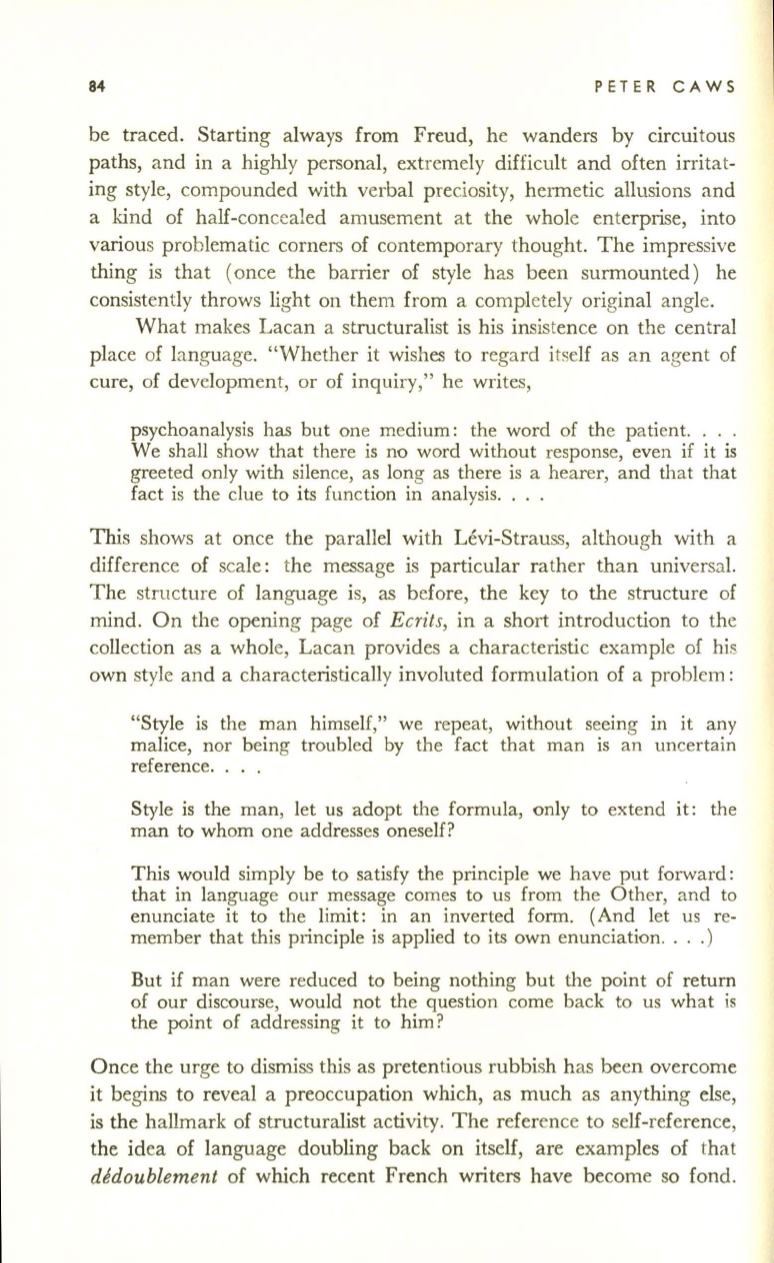
84
PETER CAWS
be traced. Starting always from Freud, he wanders by circuitous
paths, and in a highly personal, extremely difficult and often irritat–
ing style, compounded with verbal preciosity, hennetic allusions and
a kind of half-concealed amusement at the whole enterprise, into
various problematic corners of contemporary thought. The impressive
thing is that (once the barrier of style has been sunnounted) he
consistently throws light on them from a completely original angle.
What makes Lacan a structuralist is his insistence on the central
place of language. "Whether it wishes to regard itself as an agent of
cure, of development, or of inquiry," he writes,
psychoanalysis has but one medium: the word of the patient.
We shall show that there is no word without response, even if it is
greeted only with silence, as long as there is a hearer, and that that
fact is the clue to its function in analysis....
This shows at once the parallel with Levi-Strauss, although with a
difference of scale: the message is particular rather than universal.
The structure of language is, as before, the key to the structure of
mind. On the opening page of
Ecrits,
in a short introduction to the
collection as a whole, Lacan provides a characteristic example of his
own style and a characteristically involuted formulation of a problem:
"Style is the man himself," we repeat, without seeing in it any
malice, nor being troubled by the fact that man is an uncertain
reference. ...
Style is the man, let us adopt the formula, only to extend it: the
man to whom one addresses oneself?
This would simply be to satisfy the principle we have put forward:
that in language our message comes to us from the Other, and to
enunciate it to the limit: in an inverted fonn. (And let us re–
member that this principle is applied to its own enunciation.. .. )
But if man were reduced to being nothing but the point of return
of our discourse, would not the question come back to us what is
the point of addressing it to him?
Once the urge to dismiss this as pretentious rubbish has been overcome
it begins to reveal a preoccupation which, as much as anything else,
is the hallmark of structuralist activity. The reference to self-reference,
the idea of language doubling back on itself, are examples of that
dldoublement
of which recent French writers have become so fond.


